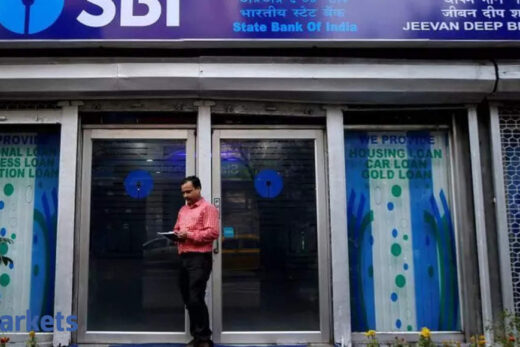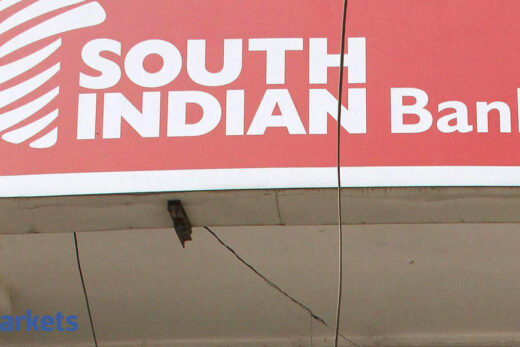However, did you know that you can increase this insurance cover and enjoy a total cover of Rs 65 lakh or more without spreading your deposits across different banks? Read on to find out how you can get a cover of Rs 65 lakh or more in the same bank and same branch.
Types of deposits that enjoy the DICGC insurance cover
The insurance cover offered by DICGC works on deposits such as savings accounts, fixed deposits (FD), current accounts, recurring deposits (RD), etc. However, there are few deposits which are excluded such as the deposits of foreign governments, central/state governments, the state land development banks with a state co-operative bank, inter-bank deposits, any amount due on account of and deposit received outside India and any amount, which has been specifically exempted by the corporation with the previous approval of the Reserve Bank of India (RBI).
How does the deposit insurance work?
As per the DICGC guidelines, each depositor in a bank is insured up to a maximum of Rs 5 lakh for both principal and interest amounts held by her/him in the same right and same capacity as on the date of liquidation/cancellation of the bank’s license or the date on which the scheme of amalgamation/merger/reconstruction comes into force.
What this means is that all your accounts held in the same right and capacity whether savings or current account, FD or RD, will be clubbed and you will get only a total insurance cover of Rs 5 lakh. This amount includes both principal and the accumulated interest amount.
So, if your principal amount is Rs 5 lakh, then you will only get this amount back and not the accumulated interest on the deposits if the bank fails. However, if the principal and accumulated interest taken together is Rs 5 lakh or less, you will get the total amount back in claim if the bank fails.
Therefore, it is better to go by maturity amount of the deposits while calculating the insurance cover. Nevertheless, if you have a non-cumulative deposit, where you regularly earn interest, then you can keep the principal amount of around Rs 5 lakh as well.
Extra insurance cover with accounts held in different rights in capacities
If you hold deposits in different rights and capacities, each of your deposits will enjoy a cover of Rs 5 lakh separately in the same bank, as per DICGC guidelines.
“Depositors can open fixed deposits in the same bank, but in different rights and capacity. In simple words, if you open a fixed deposit in same bank as a joint holder with your spouse, brother or children, or you open a FD as a partner of a firm, guardian of a minor and so on, then all these FD will be considered as held in different capacity and different right, and each account will have the insurance cover up to Rs 5 lakh separately. So, ideally you should segregate your investment in FD, to enjoy higher deposit insurance coverage even in the same bank,” says Col Sanjeev Govila (Retd), a SEBI Registered Investment Advisor (RIA), and CEO, Hum Fauji Initiatives, a financial planning firm.
Let us understand how multiple covers of Rs 5 lakh can work on different accounts with an example of a family of six. Mr A and his spouse Mrs B have a minor son X and minor daughter Y, Mr C and Mrs D are the father and the mother of Mr A.
If Mr A, besides his individual accounts also opens other deposit accounts in his capacity as a partner of a firm or guardian of a minor or director of a company or trustee of a trust or a joint account, say with his wife Mrs B, in one or more branches of the bank then such accounts are considered as held in different capacities and different rights. Accordingly, such deposit accounts will also enjoy the insurance cover up to Rs 5 lakh separately.
| Number | Account holder/s | Right and capacity of the account held in | Separate insurance |
| 1 | Mr. A | Individual Account | Yes, up to Rs 5 lakh |
| 2 | Mr. A | Account as a Partner of ABC & Co. | Yes, up to Rs 5 lakh |
| 3 | Mr. A | Guardian of Minor Son “X” | Yes, up to Rs 5 lakh |
| 4 | Mr. A | Guardian of minor daughter “Y” | Yes, up to Rs 5 lakh |
| 5 | Mr. A | Director of company PQR Ltd. | Yes, up to Rs 5 lakh |
| 6 | Mr. A & Mrs. B | Joint account with spouse B: First a/c holder- “A”, Second a/c holder – “B”) | Yes, up to Rs 5 lakh |
| 7 | Mr. A & Mrs. B | Joint account with spouse B in different order: First a/c holder- “B”, Second a/c holder – “A” | Yes, up to Rs 5 lakh |
| 8 | Mr. A & Mr. C | Joint account with father C: First a/c holder – “A”, Second a/c holder – “C” | Yes, up to Rs 5 lakh |
| 9 | Mr. A & Mrs. D | Joint account with Mother D: First a/c holder – “A”, Second a/c holder – “D” | Yes, up to Rs 5 lakh |
| 10 | Mr. A, Mrs. B and Mr. C | Joint Account with spouse B and father C: First a/c holder – “A”, Second a/c holder – “B”, Third a/c holder – “C” | Yes, up to Rs 5 lakh |
| 11 | Mr. A, Mrs. B and Mr. C | Joint Account with spouse B and father C in different order: First a/c holder – “B”, Second a/c holder – “C”, Third a/c holder – “A” | Yes, up to Rs 5 lakh |
| 12 | Mr. A, Mrs. B and Mrs. D | Joint Account with spouse B and mother D: First a/c holder – “A”, Second a/c holder – “B”, Third a/c holder – “D” | Yes, up to Rs 5 lakh |
| 13 | Mr. A, Mrs. B and Mrs. D | Joint Account with spouse B and father C in different order: First a/c holder – “D”, Second a/c holder – “A”, Third a/c holder – “B” | Yes, up to Rs 5 lakh |
| More accounts with different combinations and orders are possible for separate Rs 5 lakh insurance | |||
Information sourced from RBI and DICGC websites
As can be seen from the example, if you have 13 such separate accounts of Rs 5 lakh each, then you can get an insurance cover on each of these accounts, and thereby enjoy insurance cover of Rs 65 lakh (5 x 13 = 65).
Govila adds: If you want to make an FD of Rs 10 lakh in a bank which is offering better interest rate than another bank, you may invest Rs 2.5 lakh in FD as an individual investor, Rs 2.5 lakh each as joint investor with your spouse and child where you are the first holder, another deposit of Rs 2.5 lakh as a joint investor with your spouse (here your spouse should be the first holder). By doing so, all your FDs will be treated as separate accounts and each one will be ensured for up to Rs 5 lakh each.
Where this won’t work: However, the separate insurance cover does not work if you have a proprietorship account along with an individual account. In this case, your proprietorship account will be clubbed with your individual account and you will get a total insurance cover of Rs 5 lakh.
Does the DICGC insurance cover of Rs 5 lakh apply for all banks?
All commercial banks including branches of foreign banks functioning in India, local area banks and regional rural banks are insured by the DICGC. At present all co-operative banks are covered by the DICGC. However, deposits in primary cooperative societies are not insured by the DICGC. Moreover, deposits in any NBFC or HFC or corporate entity do not enjoy this insurance cover.
What you should do
Preservation of capital remains the highest priority for a majority of FD investors. Banks have traditionally been the most trusted institutions when it comes to safekeeping of public money.
However, this has changed of late. In the recent past, we have witnessed many instances where the financial stress and failure of several banks in India (like YES Bank, PMC Bank) have shocked conservative investors who invest their savings in bank deposits or keep it tucked away in bank savings accounts.
It is said that you should not put all your eggs into one basket. The same can be said about your deposits as well — do not put all your money into one account or FD. The best way to ensure the safety of your bank deposits is to make sure that you make deposits in different rights and capacities while keeping the maturity amount up to Rs 5 lakh in accounts held in the same right and capacity.



